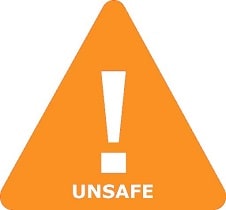Is EINECS 216-597-8 Safe in Breastfeeding
Question
I am a breastfeeding mother and i want to know if it is safe to use EINECS 216-597-8? Is EINECS 216-597-8 safe for nursing mother and child? Does EINECS 216-597-8 extracts into breast milk? Does EINECS 216-597-8 has any long term or short term side effects on infants? Can EINECS 216-597-8 influence milk supply or can EINECS 216-597-8 decrease milk supply in lactating mothers?
EINECS 216-597-8 lactation summary

- DrLact safety Score for EINECS 216-597-8 is 5 out of 8 which is considered Unsafe as per our analyses.
- A safety Score of 5 indicates that usage of EINECS 216-597-8 may cause serious side effects in breastfed baby.
- Our study of different scientific research indicates that EINECS 216-597-8 may cause moderate to high side effects or may affect milk supply in lactating mother.
- Our suggestion is to use safer alternate options rather than using EINECS 216-597-8 .
- It is recommended to evaluate the advantage of not breastfeeding while using EINECS 216-597-8 Vs not using EINECS 216-597-8 And continue breastfeeding.
- While using EINECS 216-597-8 Its must to monitor child for possible reactions. It is also important to understand that side effects vary largely based on age of breastfed child and time of medication in addition to dosage.
- Score calculated using the DrLact safety Version 1.2 model, this score ranges from 0 to 8 and measures overall safety of drug in lactation. Scores are primarily calculated using publicly available case studies, research papers, other scientific journals and publically available data.
Answer by Dr. Ru: About EINECS 216-597-8 usage in lactation
Eventual and low dose use of benzodiacepines are compatible with breastfeeding. Use the short-acting benzodiazepine and minimal effective dose as possible mostly in the neonatal period. Follow-up for sedation and feeding ability of the infant. Bed-sharing is not recommended for mothers who are taking this medication.
Answer by DrLact: About EINECS 216-597-8 usage in lactation
EINECS 216-597-8 is not approved for marketing in the United States by the U.S. Food and Drug Administration. It is excreted into breastmilk and, because of its long half-life of about 20 hours, it may accumulate in the serum of breastfed infants with repeated doses. Other agents are preferred, especially while nursing a newborn or preterm infant. After a single dose of EINECS 216-597-8, as for sedation before a procedure, there is usually no need to wait to resume breastfeeding, although with a newborn or preterm infant, a cautious approach would be to wait a period of 6 to 8 hours before resuming nursing.
Alternate Drugs
Clorazepate(Low Risk)
Flunitrazepam(Unsafe)
Oxazepam(Safe)
Alprazolam(Low Risk)
Lormetazepam(Safe)
Midazolam(Safe)
Lorazepam(Safe)
Chlordiazepoxide(Low Risk)
Temazepam(Low Risk)
Meprobamate(Low Risk)
Diazepam(Low Risk)
Nitrazepam(Low Risk)
Quazepam(Unsafe)
Flunitrazepam(Unsafe)
Clonazepam(Low Risk)
Oxazepam(Safe)
Alprazolam(Low Risk)
Lormetazepam(Safe)
Midazolam(Safe)
Clobazam(Low Risk)
Lorazepam(Safe)
Chlordiazepoxide(Low Risk)
Estazolam(Low Risk)
Temazepam(Low Risk)
Flurazepam(Unsafe)
Diazepam(Low Risk)
Nitrazepam(Low Risk)
Quazepam(Unsafe)
Clorazepate(Low Risk)
Butabarbital(Low Risk)
Quazepam(Unsafe)
Pentobarbital(Low Risk)
Clorazepate(Low Risk)
Phenobarbital(Low Risk)
Secobarbital(Low Risk)
Flunitrazepam(Unsafe)
Propofol(Safe)
Oxazepam(Safe)
Alprazolam(Low Risk)
Lormetazepam(Safe)
Ketamine(Low Risk)
Chloral Hydrate(Low Risk)
Midazolam(Safe)
Zolpidem(Safe)
Estazolam(Low Risk)
Zaleplon(Safe)
Triazolam(Low Risk)
Flurazepam(Unsafe)
Lorazepam(Safe)
Chlordiazepoxide(Low Risk)
Eszopiclone(Low Risk)
Sodium Oxybate(Low Risk)
Meprobamate(Low Risk)
Temazepam(Low Risk)
Butalbital(Low Risk)
Diazepam(Low Risk)
Nitrazepam(Low Risk)
